Sometimes, an Achilles Heel isn’t spectacular. It can be a completely mundane thing that totally destroys the economic viability of fixing a car, whether it’s an unobtainium part or one that’s simply far too expensive. When that happens, a car dies with a whimper, not with a bang, but that doesn’t mean it’s not worth talking about. If we’re talking identical replacement parts, a 2005 to 2007 Ford Focus can be financially totalled by a clogged air filter. Here’s why.
An engine air filter is one of the most common maintenance items on any car, because having an engine breathe in particulate matter is generally bad for tight internal tolerances. These predominantly paper filters are usually designed to be replaced every two years or so, and they’re pretty much always dirt-cheap. Figure anywhere from a couple of dollars for a budget aftermarket filter for something like a Toyota Corolla to like $62 for the enormous panel filter in a Porsche Panamera. It’s not rocket science, clean air in keeps an engine happy, and changing the filter regularly prevents it from getting clogged with junk.
Indeed, when Ford launched the U.S.-market first-generation Focus in 1999, it came with a normal serviceable air cleaner that contained a replaceable paper filter. Motorcraft part number FA188, to be precise. Why? Because it works and it’s the right move. Except for the SVT, all Focuses used this filter arrangement through 2004, but then Ford decided to make a change.
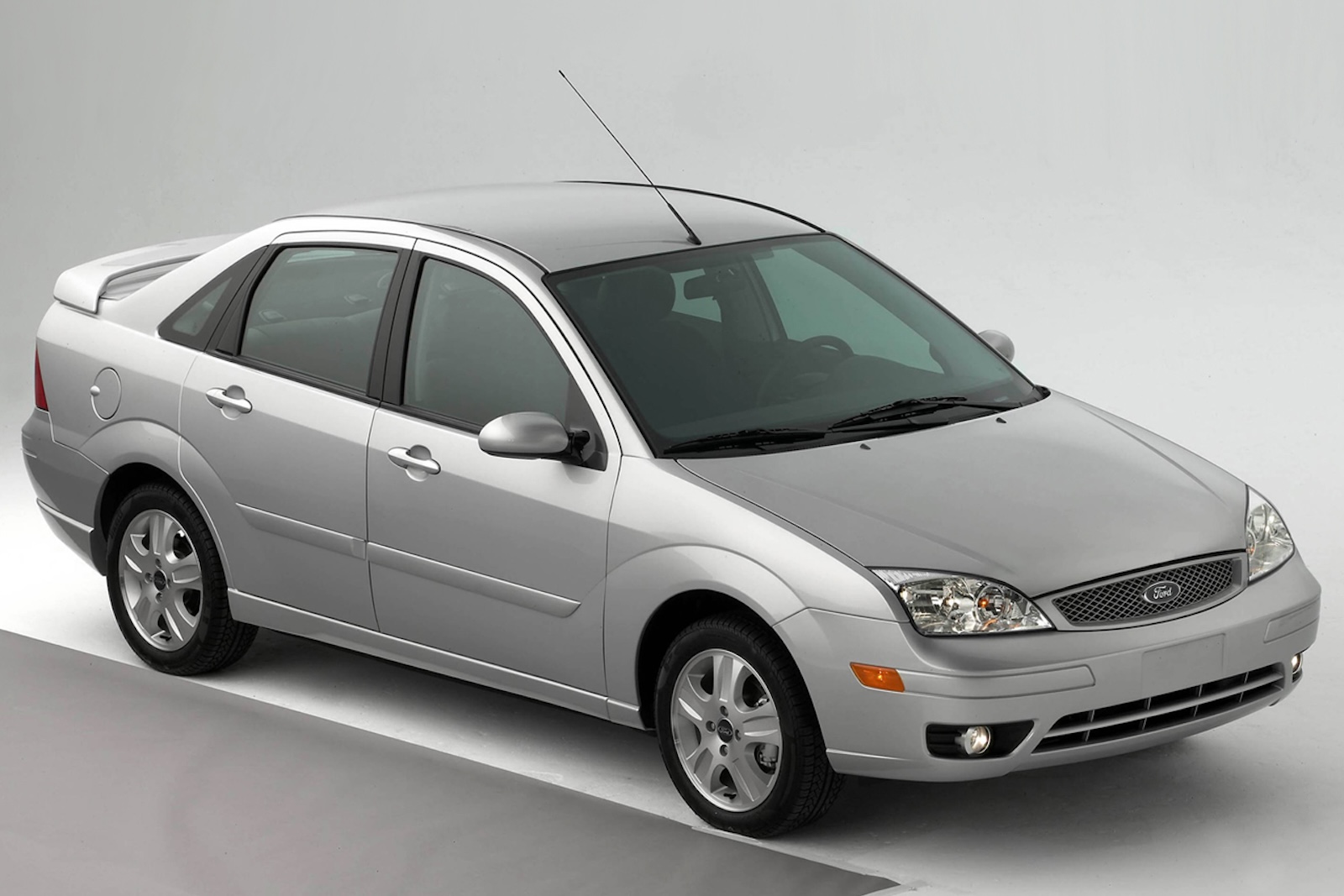
While the rest of the world got an all-new Focus for 2005, North America got a facelifted first-generation model that took some of the weirdness out of the dashboard, updated the lighting and styling to look more modern, and ditched the old 110-horsepower CVH base engine in favor of a 136-horsepower two-liter Duratec unit. In most ways, it was still the same great-handling car that Americans had grown to love. Good stuff, except for one infuriating change.

See, Ford decided to implement a lifetime air filter. Huh? Yep, instead of a paper element you could change every couple of years, the 2005 Focus featured a sealed airbox in the driver’s side wheel well, one that was filled with a series of progressively finer foam elements and featured a gauge to display when the filter was clogged. In theory, it was supposed to be good for 150,000 miles of driving, although because there isn’t really a such thing as a one-size-fits-all “lifetime” part interval, you can probably guess what happened next.
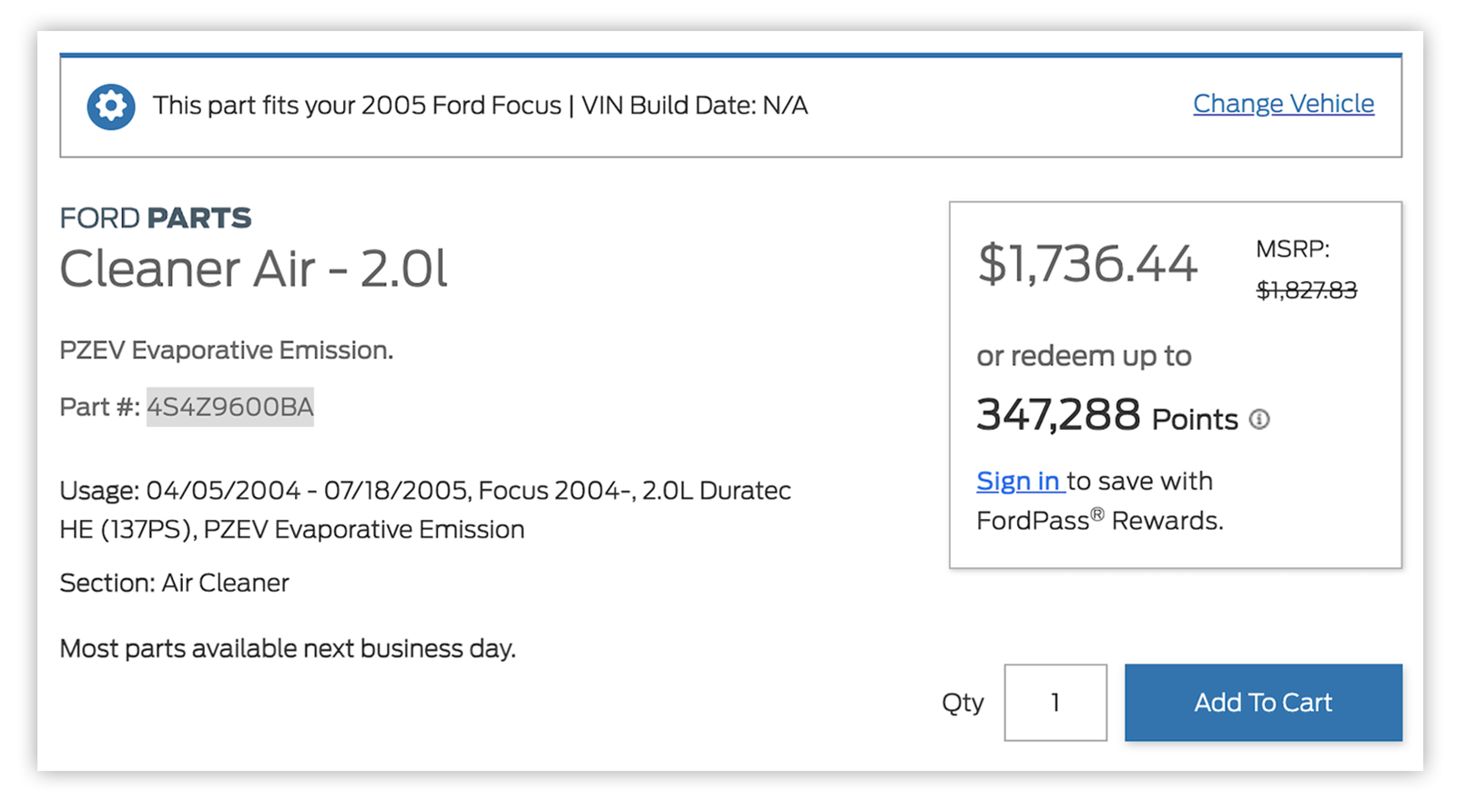
Yep, some owners found that these long-life air filters did eventually clog, resulting in reduced fuel economy and, in extreme cases, rough running. However, instead of just swapping out a cheap air filter, a replacement lifetime air filter is seriously pricey. While it used to cost a few hundred dollars, a replacement sealed air cleaner for, say, a 2005 to 2007 Focus that meets PZEV standards now lists for $1,827.83 and often retails for more than $1,500. That’s about the cost of an entire first-generation Focus.

Understandably, the heavier 2008 refresh saw the adoption of a conventional airbox in non-PZEV models, but the story doesn’t end there. Ford also used a “lifetime” engine air filter design on the 2010 to 2012 Fusion Hybrid, and it also caused a handful of issues once mileage really started to be added. As one Fusion Hybrid owner wrote on the Ford Fusion Club forum:
Well recently while driving on freeway the car would shut down on me when going at 70 mph or over. That’s the only thing I could think was wrong with it, not enough air going in through air filter. Decided to get a new one from Ford (comes with MAF sensor already). Took out old one and blew air through air intake tube and it was difficult to blow air through filter. I literally cut the old assembly in half and it was clogged and dirty. My car as over 130000 miles.
Indeed, now that these cars are in cheap used car territory, the lifetime air filter can be a pain in an owner’s side if it clogs. While the assembly for a Fusion Hybrid is cheaper than it is for a Focus at about $456, it’s also on backorder. Not great considering most jurisdictions categorize the air box as emission equipment, and especially sub-optimal when you consider that if a conventional serviceable filter element with a 15,000-mile replacement interval was used, there isn’t really a lifetime parts cost advantage to going with the lifetime filter.
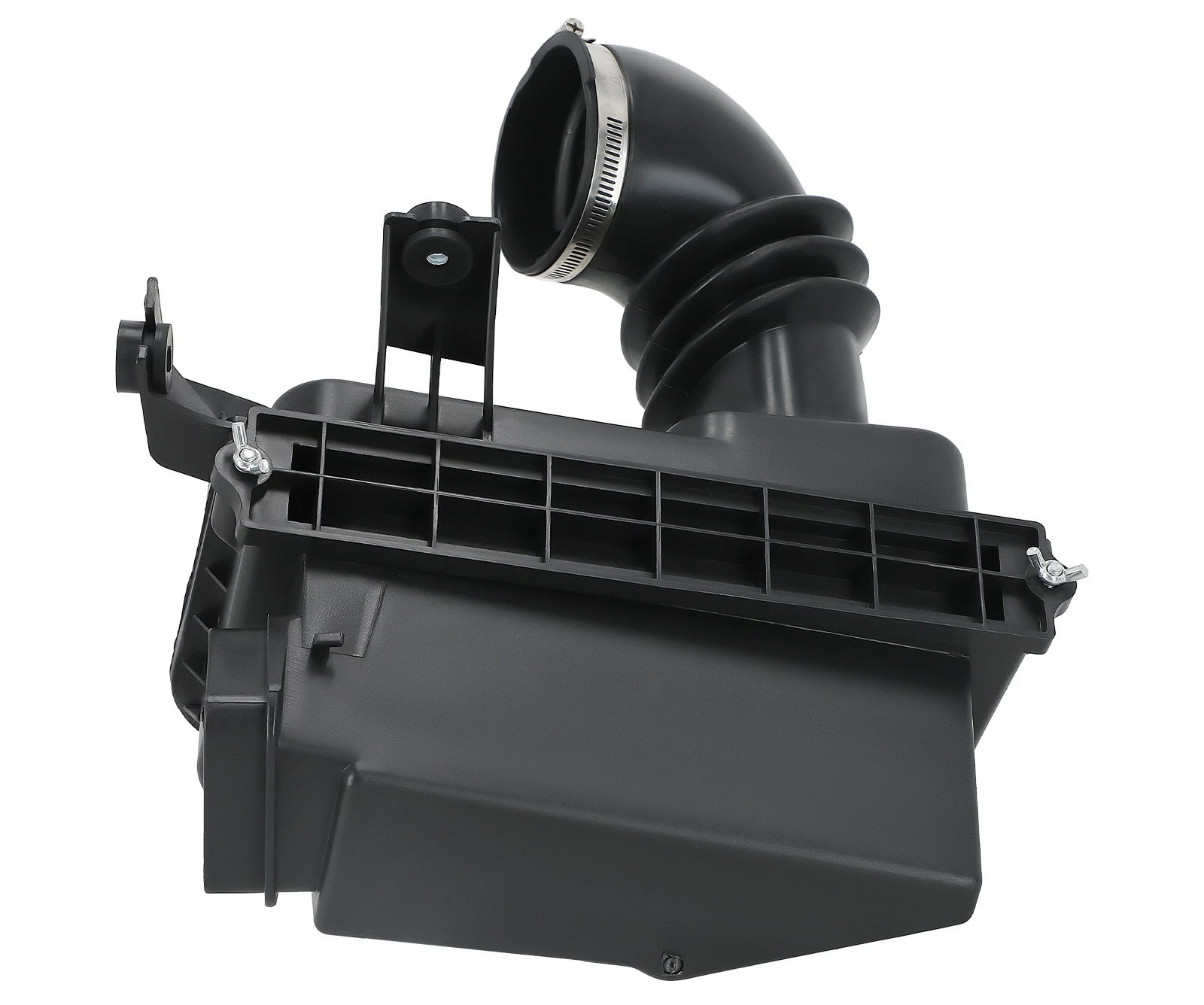
Thankfully, for Focus owners in dirty environments with clogged lifetime air filters that don’t have to use the factory air box to comply with local emissions standards, there is a solution. You can pick up a third-party air box with a serviceable air cleaner on eBay for about $70, and it will accommodate the filter element from a 1991 to 1994 Saturn SL.
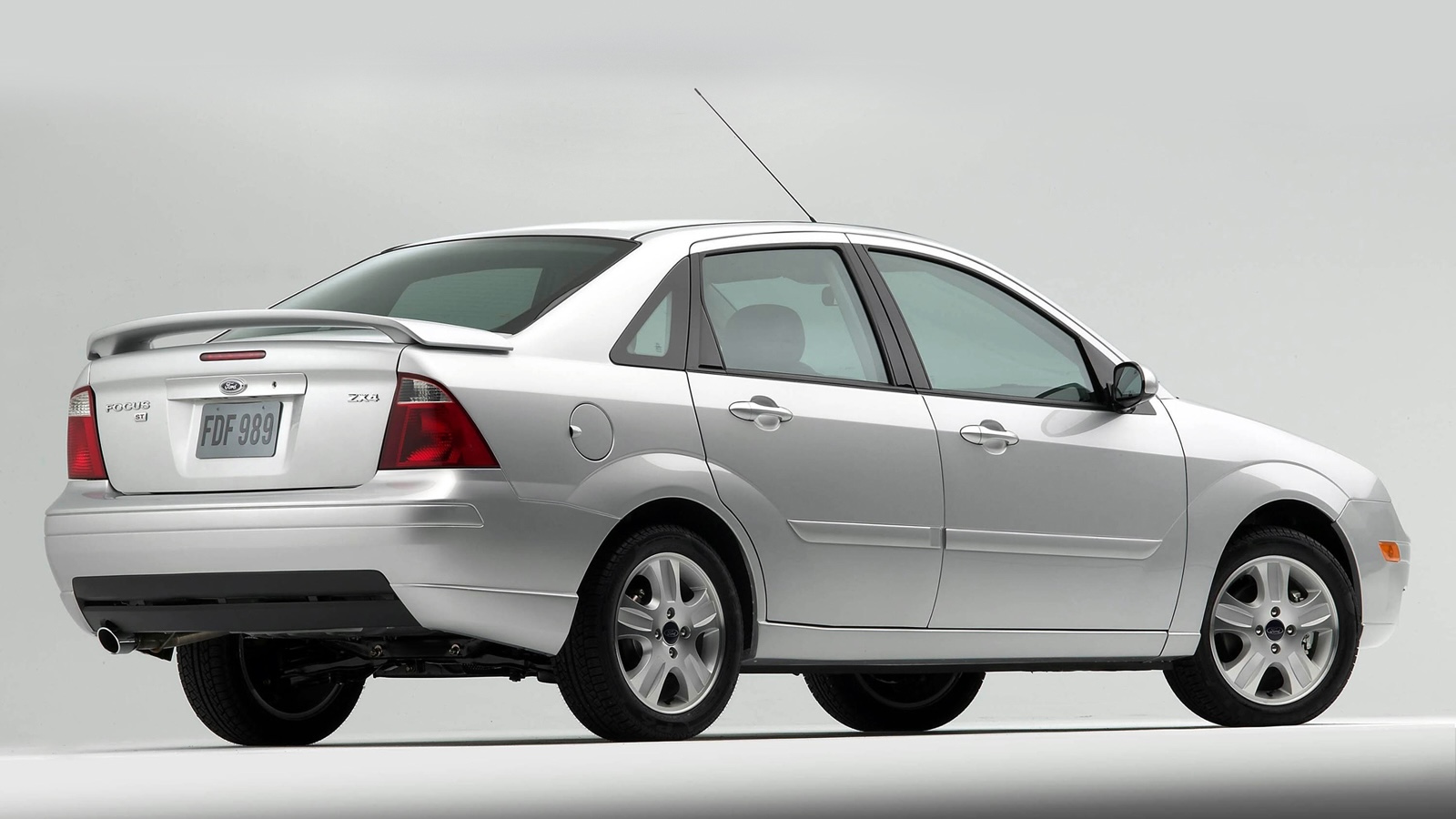
Still, this is one of those things that shouldn’t need a solution in the first place. While a dirty air filter probably won’t kill a car, a replacement shouldn’t cost nearly as much as the car’s worth, or even 20 times as much as a typical standard air filter usually costs. Unsurprisingly, Ford no longer uses these lifetime air filters in anything, because a regular air filter just gets the job done.
Top graphic image: Ford
Support our mission of championing car culture by becoming an Official Autopian Member.

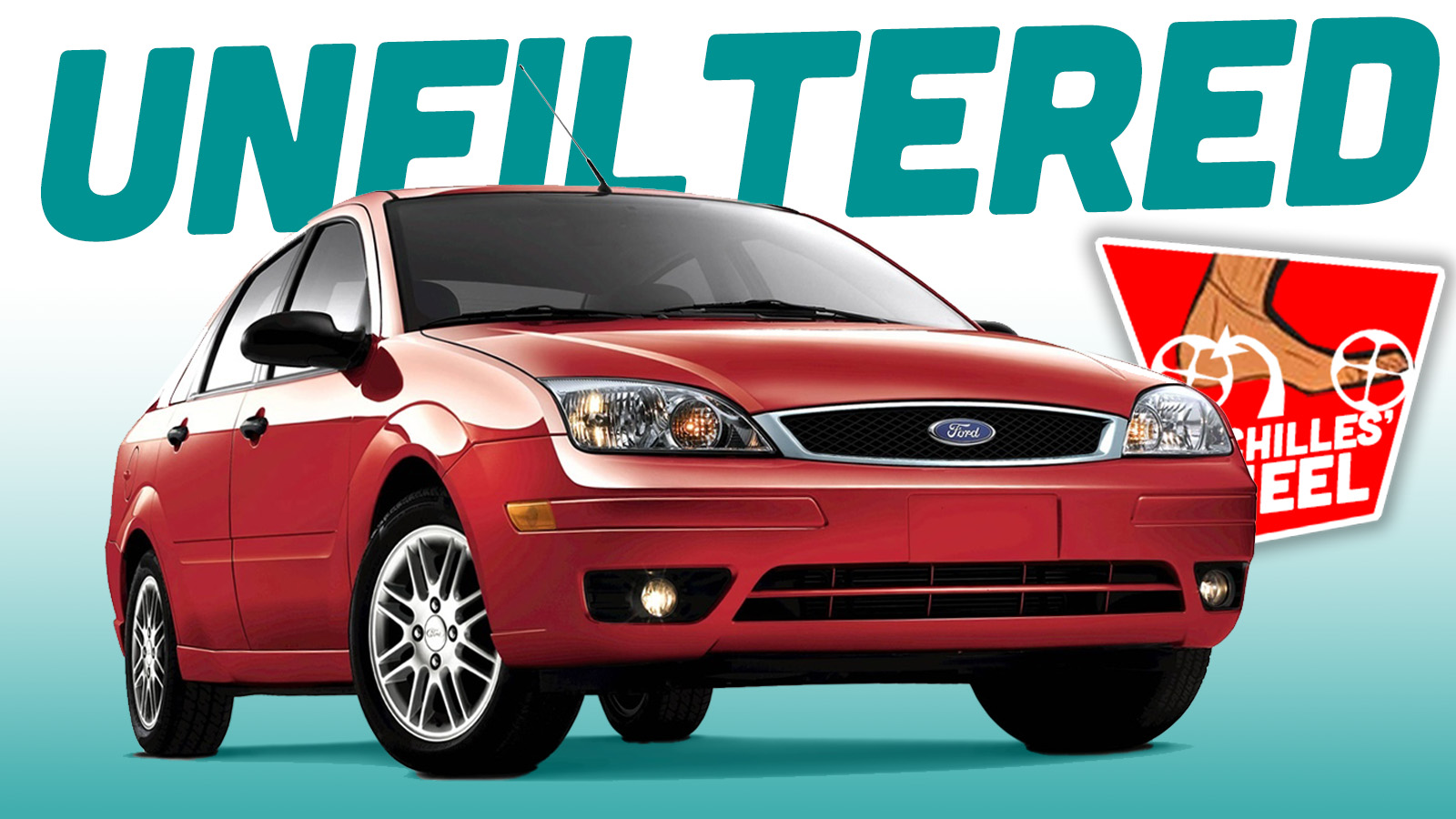




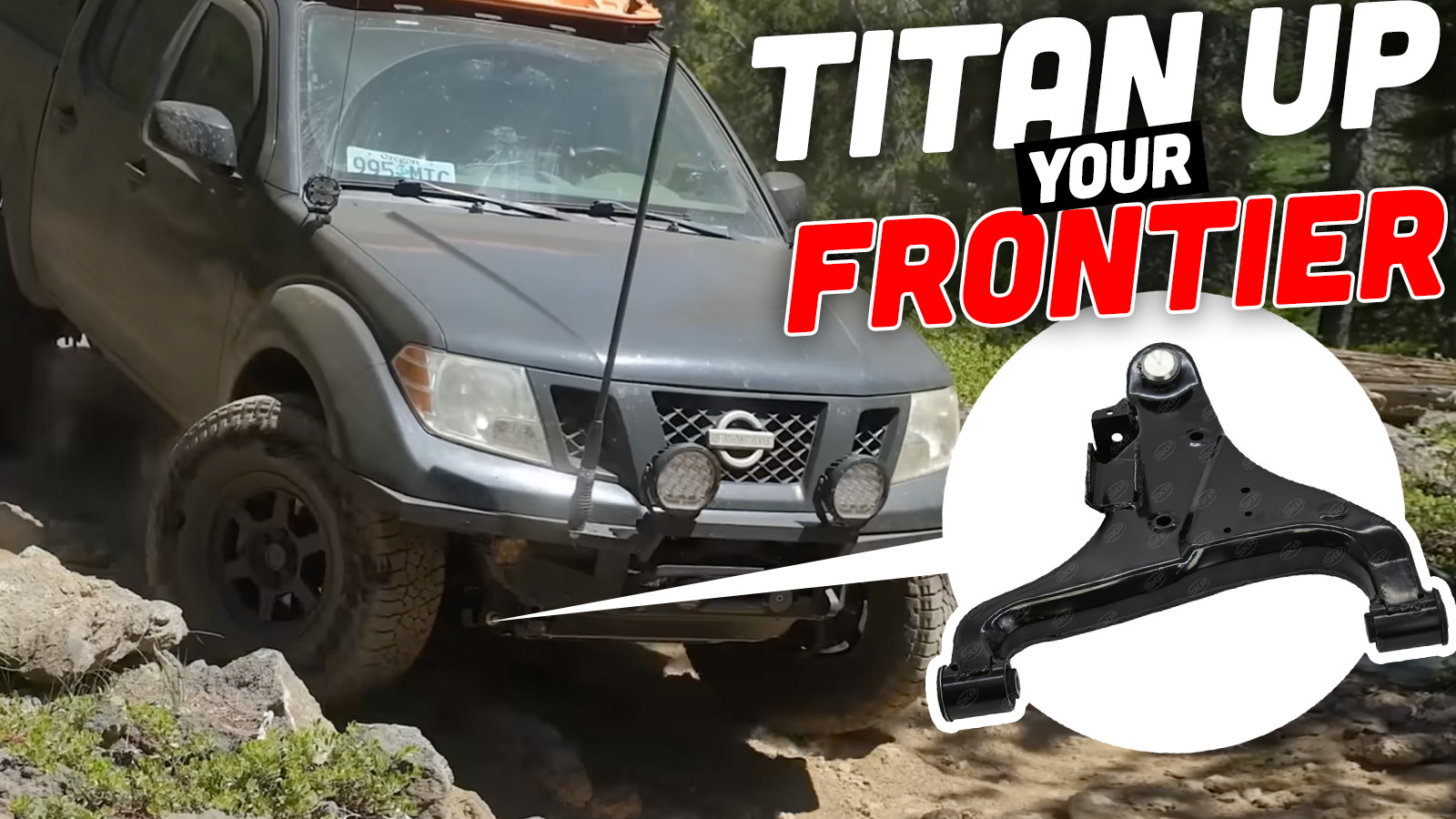


I owned a 2000 Focus with the 16v zetec and remember it fondly. It was very reliable and fun to drive. I actually loved the funky (not weird) dash. I even got to use a 2005 several times in the form of a fleet vehicle at work and found the “non weird” dash looked very cheap and plastic. I felt it let down what was otherwise a very well built small car.
The hideous looking 08-11’s were built even better. Yes, cheap plastic, but I cleaned mine regularly and applied product a couple times a year, and when I got rid of it at year 15 it didn’t look that much different than the day I acquired it.
What really sucks is when you take your car to the dealer for service. Wait about 20 minutes and the service advisor will come into the waiting lobby and show you a filthy filter advising you to have it changed for about $60,and try to shame you into doing it in front of all the other people waiting. My response is always the same. Look asshole, I keep up on that filter stuff myself and that did not come out of my vehicle because mine has a big purple highlighter mark on it because I knew you would try to pull this shit during my service visit. Oh, asshole, just so you know, the cabin filter is marked, too!
I once took my car to have a refrigerant leak repaired in the AC and they tried to convince me my cabin air filter was dirty as fuck. I replaced it myself the week prior. Then they switched the plot and told me it was broken. No it wasn’t. You fuckers broke it when you tried to scam me to buy a new one for 3x the price.
they actually broke one of the panel cover clips that holds the cabin filter door on mine trying to pull BS. Needless to say, I have a whole brand new cover assembly now at their expense. Now when I go in for service, the advisor puts a do not touch post it note on my glovebox door. And yes, the price, my cabin filters cost $18 and they want to charge $75. Ridiculous.
Just had this happen last week while getting my oil changed. They plopped that filter down on the counter, telling me how bad of shape it was in, and I thought “I have a K&N in there, and that looks nothing like that, but go on…” They also said something about the transmission was OK, and I thought “I had the transmission replaced a year ago; I HOPE it’s ok!”. Like, just change my oil and get me out of here please.
Ford did not just decide to equip those vehicles with the lifetime filter. Using the Lifetime filter was the difference that gave the vehicles the PHEV status. Using an air cleaner w/o a replaceable filter is nothing new, GM did it with the Vega and they were still supposed to be replaced every 12k mi. It didn’t take long until the aftermarket came up with an air cleaner assembly that could be separated and the filter replaced.
The Vega air filter was covered here at the Autopian! https://www.theautopian.com/chevrolet-pissed-everyone-off-when-it-put-these-dumb-air-filters-on-the-vega/
“Ford has a worse idea”
At least in most states this easier and cheaper to fix than a failed Powershift or Ecoboost.
I had a boat with an inboard 351 and all it had was a metal mesh screen over the carb intake. Of course you don’t encounter a lot of dust out on the lake so maybe that’s okay.
And that metal screen wasn’t an air filter at all. It was a flame arrestor for backfires.
There’s a lot of folks out there that believe any car has a “lifetime” air filter. This set-up would be a deal breaker but I’m sure 99% of sales reps didn’t know about it and if they did they kept their mouths shut.
I’ve always wondered what percentage of cars are driving around with air filters that have never been changed.
It is amazing that a car company around as long as Ford, did not see the issue with this.
In fairness it’s not a bad idea nor that bad of an execution. There aren’t reports of premature failures, and it seems most did make it past 100K+ miles and more as intended. If a normal filter had to be replaced every, say, 20K miles at $20 each, that’s $100 savings to the owner. For an economy car like the Focus that’s not nothing, and would be more money in the lifetime maintenance budget for a coolant service, brakes, oil changes, etc. In a world where people will choose a worse vehicle that is rated to eke out 1mpg more than a better competitor, and/or which has a slightly lower expected lifetime cost of ownership, these things matter.
The replacement cost now is a bit absurd, but that’s supply and demand, but there aren’t that many of those second-gen (or facelifted first-gen, however you choose to describe it) and early Fusion Hybrid’s still out there. Plus that large of a part would take up a decent amount of room on a warehouse shelf, and aftermarket suppliers would need to justify making more, which is easier to do for something like the F-Series, less so for a more disposable appliance like an economy car.
Well this is the most Ford thing I’ve heard today.
If you want to rag on the Focus some more the ignition cylinders were also garbage with the key getting stuck in them. There was a point where I’d just pull the whole ignition cylinder with the key stuck in it in my pocket as one big assembly.
I have a 2011 Ford and the cylinder turns just fine but isn’t held into the column anymore. So key in, start etc work fine but it’ll back out or even fall out on bumps/turns etc. Doesn’t shut off the car or anything. Key comes out just fine in the off position if I use a finger to hold the cylinder in.
Every so often I think I should do something about it. Then I think “why?” It seems to have no negative impacts and I’m cheap and it isn’t something I’m willing to tackle myself because from the videos I’ve seen it’s small and finicky to repair.
My family’s Ford Aerostar (early 90s) was similar. You needed the key to start the van, but could then pull the key out since the lock mechanism had worn out prematurely. It actually came in handy a few times when we had started the car and had the A/c maxed to cool off, but someone had forgotten something in the house. The house keys were in the same ring as the car. Glad (?) to hear ford kept the tradition of cheap ignition cylinders for another decade or so.
LOL, 94 Bronco, same! I thought hey-as long as the truck runs, I’m not gonna worry about it.
For the first year the iconic Chevy Small-Block engine (265 ci) in the 1955 Corvette and Bel Air did not have an oil filter.
Interesting. How did they go about that? Air-cooled VWs didn’t have oil filters either, just a mesh strainer that looks like a colander.
My understanding is that the oil needed to be changed frequently, like every 1,000 or 2,000 miles.
That sounds about right. In the VW engines it’s every 3,000 miles. Although I guess that was the standard for a lot of cars for a long time. The manual for my Beetle notes that if you drive short distances in city traffic in the winter, that you should change it every 1,500 miles, I’ve heard the same about hot and dusty conditions.
There was a oil filter that was a dealer-installed accessory but it was a bypass filter, it only filtered a small amount of oil at a time.
Interesting! Guess that was better than nothing. I’ve been meaning to get a kit that lets me run a traditional oil filter on my Beetle, but I don’t think anything like that was ever offered from the factory or dealer.
So stupid.
But then again, the BMW i3 Rex also doesn’t have a serviceable engine air filter… seems like a future David article.
Yeah we got hit by this and gave the car away since we couldn’t move to a state that requires factory emissions equipment after replacing with a cone filter. Grr.
Someone told me around that time it was inspired by the quick change oil places always trying to sell a overpriced air filter. If the customer knew they had a lifetime air filter they wouldn’t get scammed by the oil change places and on an economy car it’s a selling feature.
I think the only place you could possibly get into trouble replacing the air filter is California visual emissions inspections especially with a box that looks like an air box everywhere else isn’t really a thing. Just add it to the California tax. Pzev is such a scam anyway. The kind of thing only Subaru markets.
I remember going to a Valvoline oil change place with a friend in her car, about 12 years ago. They went to all the trouble to remove the air cleaner on her beater Civic, and had the nerve to try and sell her a new one for $50. She declined, of course. We had more important things to worry about, like the fact she’d been driving around without any oil for days.
I think dealers are in on the racket too. I detailed cars up until this year as a side business. In a ~2016 Corolla I found a dealer receipt for replacing the engine air filter. For $85. That’s highway robbery.
For sure, the dealers were probably happy knowing they cooked sell the expensive oem part at some point. They know most costumers go to quick lube places anyway. How they get away with the stuff they do is beyond me I guess people have no idea what things cost.
I’ve seen the really bad exploding fram filters on people’s cars and said you need to get that off. Only for them to tell me they paid for the upgraded filter at the oil change place.
LOL it was explained to me that the ‘PZEV’ refers to the vapor recovery system. I laughed in the Subaru salesman’s face and said you mean the charcoal canister that every car’s had since the 70s? A total scam. How can you have partial zero? Besides my F-350 is a partial zero emissions vehicle. It doesn’t emit a damn thing when it runs.
The little badge on the back with the leaves got me everytime. It’s zero when it’s off. Especially because I knew environmental people driving them. Everyone else just had a little sticker somewhere. Most of the hondas had it on the rear door windows. The big plus is it’s supposed to have 15 year warranty on emissions but they don’t honor it outside of California. The same level of insanity everyone knows and is used to. I don’t think I ever got a straight answer from a dealer but something about vapers. I think I said something like yeah they all have evap canisters.
Partial Zero in CARB language means that at least on of the regulated emissions is zero. So yeah that air cleaner prevented loss of vapors from the intake and they were able to claim zero evap emissions.
The Chevy Vega had one where you had to replace the stamped sheet metal housing along with the paper element as it was a welded assembly. But this takes it to a whole new level of cost. IIRC it wasn’t too difficult on the Vega to drill the spotwelds out and substitute the element with a similar size from whatever.
Funny, the Autopian is where I learned that fact! https://www.theautopian.com/chevrolet-pissed-everyone-off-when-it-put-these-dumb-air-filters-on-the-vega/
That’s what I did on my Vega. An added benefit was that an suitable Fram replacement was a little taller and created a gap between the two halves. That gave me the intake growl that makes today’s cone filters so popular.
Fram sold a two piece air cleaner that came apart so you could replace the filter.
It’s this sort of thing that is a great reminder to take manufacturer recommended maintenance with a grain of salt if you plan to own a vehicle beyond the warranty period. A manufacturer doesn’t necessarily have a vested interest, beyond customer loyalty, in any vehicle they sell continuing to perform well after the warranty period is up. I also bet this isn’t controversial to most people reading this and would bet a poll of readers would show that the majority have their own maintenance intervals that aren’t as long as what is in the manual.
I’m just glad someone came up with a replacement part thats serviceable. Was thinking a home depot run for some tubing and a cheap conical filter was in order.
Any universal “cold” air intake would do really.
They also decided that some of the fuses (if I recall correctly, the power window fuse) would be placed on the back of the fuse panel under the dash.
This meant, if that function stopped working, the only way to even check the fuse was to pull the fuse panel out of the dash.
…and here I was thinking the cabin air filter in the New IDBUZZ or P1 Volvos was a pain.
The number of brain-dead executives in the automotive industry is astounding.
What is even more astounding is that seemingly all the good ideas are killed by the committee-think mentality, and yet something this dumb was approved by all the brainiacs that sit in these committees.
This is what it looks like when a company is pushing hard to lower its cost-of-ownership numbers, but doesn’t want to invest in making their cars more reliable and instead wants to do it one $5 air filter at a time.
Ummmm, it sounds more like brain dead engineers that thought of it and the dumb execs that believed them that it was a good idea.
Marketing got to the execs first. The execs forced engineering to make one. Another case of “because you could doesn’t mean you should”.
It was extortion by CARB that forced it.
CARB is responsible for the shitty choices of engines and all the insanely restrictive emissions equipment in the US market. I hate them with the fire of 10,000 suns.
Engineers would never in a million years willingly do this if their hand wasn’t forced by higher up executives.
It wasn’t Ford it was CARB that gave the PZEV credit for using a filter that would stop evap emissions from the intake tract.
Then why didn’t other automakers follow Ford with such a stupid solution? CARB and other regulations don’t typically dictate HOW something is done, it is bone-headed car executives that think they have a brilliant solution when it really isn’t.
Executives would not have any say in such a plan, they might madate that it is a PZEV but not how. The thing is that Ford was getting out in front of the ZEV mandate by accumulating credits before the law, which was later repealed.
Every ICE car I’ve owned returned evaporative emissions to the intake to get burned. That’s your gas, darn it! Including two made later than this Focus’ed mistake.
This is for the fumes left in the intake upon shut down, which are considered “off-cycle” and need to be immeasurable for them to get the PZEV credit which dictated how many other vehicles they could sell at the time.
Interesting, didn’t know that!
Thanks for reminding me! I need to change the cabin air filter and engine air filter on my daily driver Mazda6. I have them sitting in their respective boxes in the garage. Just haven’t taken the time to change them. I change mine annually.
I remember this when I shopped my ’10. I was most adamant that I did not want a PZEV model, but dealerships being dealerships, before I took delivery of the one they’d found for me (took awhile b/c 5 spd), I opened the hood to check that the airbox could be opened/had the latches. The salesman was so confused.
But it worked great in the lab for over 200k simulated miles with virtually no loss in efficiency or clogging… sucking in clean, environmentally conditioned air.
If it were ze Germans, or gm, or Nissan, I’d agree, but I’ll give Ford a fair amount of credit for their efforts to do solid real-world testing on their vehicles and in a wide variety of conditions, at least for NA and AU market vehicles.
Asinine idea. I’d just somehow adapt a cone filter or other make airbox to fit. As long is it’s not throwing an OBDII code here in PA I would likely be good.
Typical Ford engineering. Again, other manufacturers do have similar issues, but still..
Honestly, this sounds like some supercar crap to me. Like, “yeah, the Ferrari air filter can’t be replaced, you have to swap the whole unit every 12k miles, but you can afford it or you wouldn’t own the car”.
I think GM did it first with the Vega.
Those were turds anyway.
The Malibu heater core is another example. As is the first generation Colorado/Canyon, the brake jobs on those are VERY HARD.
These days when I see the term “lifetime” for anything associated with a car, I run. Nothing lasts a lifetime. Hell most lifetimes don’t last a lifetime.
If a part claims to last the lifetime of the car, all that means is the car dies when the part does. No better I can think of than “Sealed for Life” transmissions, you best believe if that fluid isn’t swapped out, that thing won’t see 200k.
Yep. My Mazda6 has “lifetime” fluid and filter for the transmission and per Mazda’s service manual, it never needs to be changed. I had the fluid and filter changed at close to 100,000 miles recently and I’m glad I did.
MY 78 rabbit with a sealed for life 4sp manual hit 200K
Eh, my Moms suburban had 225k+ miles on the factory transmission fluid when she traded it in. Not saying it’s right but there are examples of over 200K negligent miles out there.
Manufacturers internally define the lifetime of certain models. For a Toyota LC Series 70 that’s probably 20-30 years but for your average BMW is perhaps 10 or so years. Rule of thumb is: when parts start becoming NLA, that’s the time the manufacturer considers the car to be dead, whether you still kept it working.
So when you see parts scarcity, change the “lifetime” fluids.
“Lifetime” figure 125k or so.
Lifetime Air filter: It lasts the lifetime of the filter.
BMW also has “Lifetime” differential fluid, in addition to “Lifetime” transmission fluid. Both of which will last the lifetime of the fluid and/or component it’s installed into.
This reminds me that the gear oil in my air-cooled Beetle’s transmission needs to be changed. It was never advertised as “lifetime” but 53 years is probably a bit longer than VW had in mind.